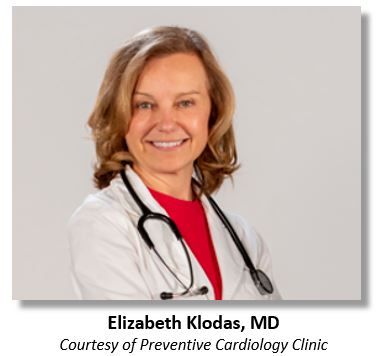For the Statin-Intolerant or Statin-Unwilling Patient, Part 2: Other Pharmaceutical Options
For the 1 in 3 individuals with hyperlipidemia who can't or won't take a statin, preventive cardiologist Elizabeth Klodas, MD, details 3 alternative drug classes.

HMG-CoA reductase inhibitors (statins) are highly effective in lowering low density lipoprotein-cholesterol (LDL-C) and are central to hyperlipidemia management. Unfortunately, statin intolerance and/or refusal to take statin medications is not ucommon in clinical practice turning about 1 in 3 statin eligible patients into management challenges.
In addition to optimizing nutrition, discussed in an earlier column, and trying different statins or prescribing lower statin doses, using pharmacologic solutions that don’t involve HMG-CoA reductase pathways can be especially useful in patients who cannot tolerate statins in any formulation or at any dose. Three suggestions follow.
1. Reducing intestinal cholesterol absorption
Avid intestinal absorption of bile cholesterol (and, to a much lesser extent, of dietary cholesterol) is a known contributor to elevated circulating LDL-C levels. Pharmacologic bile acid sequestrants such as cholestyramine (Questran®), colestipol (Colestid®) and colesevelam (Welchol®) actively interfere with this process and represent the first generation of lipid lowering drugs. Available as powders, tablets, and chewable bars, these generic medications are typically taken with meals and dosed multiple times per day, making adherence challenging for many patients. In addition, various digestive side effects, especially constipation, fat soluble vitamin malabsorption, and interference with absorption of other medications (eg, warfarin, oral contraceptives, and L-thyroxine) narrow the group of patients for whom these agents are a viable option. However, with full dosing and adherence, LDL-C reductions can reach 30%.1
Intestinal cholesterol, whether coming from bile or food, must bind to a specific receptor, the Niemann-Pick C1-like 1 (NPC1L1) protein, before it can enter the enterocyte. Generic ezetimibe (Zetia®) interferes with the activity of this receptor2 preventing cholesterol endocytosis. Although typically considered an adjunct to statins, ezetimibe monotherapy can yield 18% reductions in circulating LDL-C on average.3
2. Reducing LDL-C production
The same chemical structure that allows statins to inhibit HMG-CoA reductase in the liver resulting in reductions in LDL-C production can cause spontaneous and irregular leaks of calcium from storage compartments within muscle cells,4 leading to muscular side effects. Bempedoic acid (Nexletol®) also causes reduced hepatic LDL-C production but works upstream from HMG-CoA reductase, inhibiting ATP citrate lyase instead.
As a prodrug that is converted to active form within liver cells, bempedoic acid does not share the statin side effect profile. However, it can significantly increase the risk of gouty attacks,5 mediated by elevations in serum uric acid levels, making bempedoic acid a less desirable option in patients who can’t or won’t take statins but also have a history of gout. Furthermore, bempedoic acid is not available as a generic preparation, making therapy potentially prohibitively expensive. Average LDL-C reductions are approximately 20%.6
3. Increasing LDL-C clearance
LDL-C clearance from the bloodstream requires the presence of active LDL-C receptors on hepatocytes. Proprotein convertase subtilisin/kexin type 9 (PCSK9), the levels of which can be genetically driven, downregulates LDL-C receptors causing LDL-C levels to rise. Conversely, people born with defective or absent PCSK9 proteins may experience LDL-C levels <40 mg/dL throughout life without apparent adverse effects. Finding ways to reduce PCSK9 levels has therefore been an area of great interest to drug developers. Administered by injection, alirocumab (Praluent®), evolocumab (Repatha®), and inclisiran (Leqvio®) function as antibodies to PCSK9 (alirocumab and evolocumab) or interfere with mRNA-mediated PCSK9 synthesis (inclisiran) and appear to be safe and well tolerated with only a small minority of patients developing reversible flu-like symptoms. Average LDL-C reductions can be as high as 70%.7 Unfortunately, these medications come with high price tags and are typically reserved for patients who have exhausted all other options for attaining LDL-C goals.
Key takeaways
• Statin-intolerant and statin-unwilling patients are common in clinical practice and their management can be challenging.
• Alternative proven and effective therapeutic options are available and should be attempted based on patient preference and individual clinical circumstances.
References
1. Lent-Schochet D, Jialal I. Antilipemic agent bile acid sequestrants. National Library of Medicie. National Center for Biotechnology Information. Updated January 23, 2023. Accessed July 14, 2023. https://www.ncbi.nlm.nih.gov/books/NBK549906/
2. Nuzman DC (reviewer). The mechanism of action of ezetimibe (Zetia) on the inhibition of cholesterol absorption. Evidence-based medicine consult. Last reviewed October 2015. Accessed July 15, 2023. https://www.ebmconsult.com/articles/ezetimibe-mechanism-action-inhibit-cholesterol-absorption-intestine
3. Knopp RH, Dujvone CA, Le Beaut A, Lipka LJ, Suresh R, Veltri EP; Ezetimibe Study Group. Evaluation of the efficacy, safety, and tolerability of ezetimibe in primary hypercholesterolaemia: a pooled analysis from two controlled phase III clinical studies. Int J Clin Pract. 2003;57(5):363-368. https://pubmed.ncbi.nlm.nih.gov/12846338/
4. Lotteau S, Ivarsson N, Yang K, et al. A mechanism for statin-induced susceptibility to myopathy. JACC: Basic Transl Sci. 2019;4(4):509-523.
doi:10.1016/j.jacbts.2019.03.012
5. Lin Y, Parco C, Karathanos A, et al. Clinical efficacy and safety outcomes of bempedoic acid for LDL-C lowering therapy in patients at high cardiovascular risk: a systematic review and meta-analysis. BMJ Open. 2022;12:e048893. doi:10.1136/bmjopen-2021-048893
6. Nissen SE, Lincoff M, Brennan D, et al. Bempedoic acid and cardiovasscular outcomes in statin-intolearant patients. N Engl J Med. 2023; 388:1353-1364 doi:10.1056/NEJMoa2215024
7. Pokhrel B, Yuet WC, Levine SN. PCSK9 inhibitors. National Library of Medicie. National Center for Biotechnology Information. Updated May 13, 2022. Accessed July 14, 2023. https://www.ncbi.nlm.nih.gov/books/NBK448100/
Elizabeth Klodas MD, is a preventive cardiologist and founder and chief medical officer of Step One Foods, based in Minneapolis, Minnesota. Step One Foods helps people reduce their dependence on pharmaceuticals for treating health issues that could be solved by food.
Klodas completed her cardiology fellowships with both the Mayo Graduate School and Johns Hopkins School of Medicine, and founded Preventive Cardiology Clinic, in Edina, MN, where she continues to see patients. She served as the founding editor of Cardiosmart.org (patient education website of the American College of Cardiology [ACC]). She remains involved in clinical research and patient education and is an active member of ACC’s Nutrition Workgroup. Klodas is the author of Slay the Giant: The Power of Prevention in Treating Heart Disease.